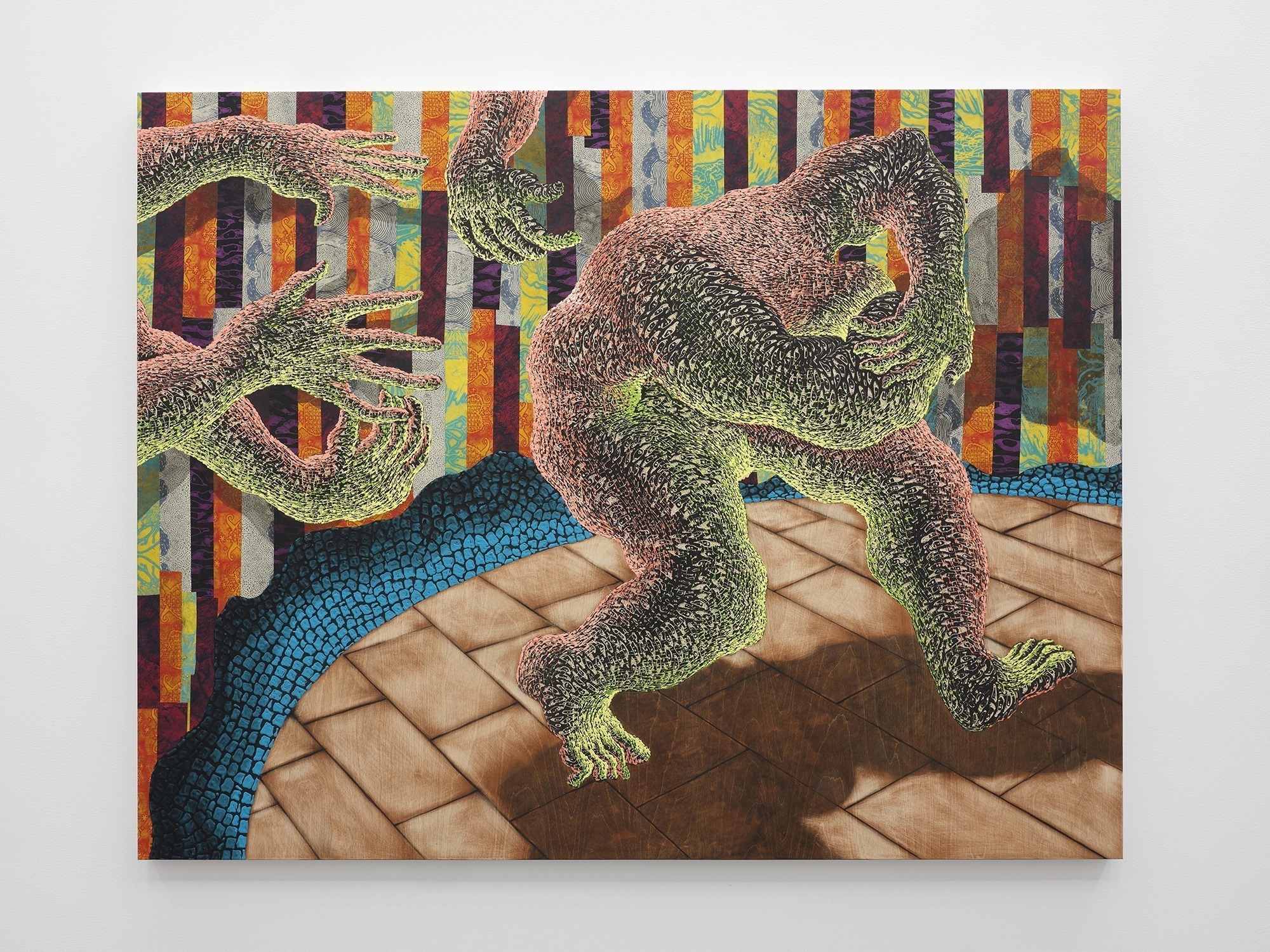Didier William (Born 1983 in Port-au-Prince, Haiti) creates fantastical figurative paintings on wooden panels that incorporate carving, collage, and traditional Haitian iconography to explore themes of personal belonging and transnationalism. Throughout his oeuvre, William depicts figures suspended in space as if underwater or floating in the air. The artist notes that the absence of gravity and a stable foundation speaks to both queerness and diaspora as unmoored states that require constant navigation to construct a sense of belonging. In 2023, the Institute of Contemporary Art/Boston included William’s work in its presentation of Forecast Form: Art in the Caribbean Diaspora, 1990s–Today.
In Gwo Tet, a large, central figure hunches over a grainy wooden floor, their arms raised above their head in a defensive gesture. To the upper left, four hands extend menacingly from beyond the edges of the panel as if beckoning or casting a spell on the central figure. In Haitian Creole, gwo tét means “big head,” a phrase used pejoratively. William candidly notes that many of his works reconstruct memories of traumatic events. In this case, Gwo Tet depicts an episode where the artist was ridiculed on his walk home from school. The title is not translated to English, a move the artist has linked with a desire to withhold information about his subjects and his memories. In this way, the use of titles in Haitian Creole, or Kreyól, in his work is both a gesture toward Haitian diasporic identity and a way of maintaining a form of privacy. This tension between the knowable and the unknowable is also present in William’s singular iconography. The artist covers his figures in a cloak of carved eyes, a formal device he says liberates them from constant perception. William typically transfers sketches onto wood panels, which he dyes with ink before carving into their surface with a rotary tool. William employs this intervention to layer deeper meaning across his works through carved patterns and collages that echo Haitian textiles from his childhood. Here, William’s ambiguous figures, sexless and ageless, modulate the viewer’s ability to superficially understand them. The work suggests that living with a degree of uncertainty and maintaining anonymity is a right not often afforded to those who fall outside the bounds of white, heteropatriarchal systems.
